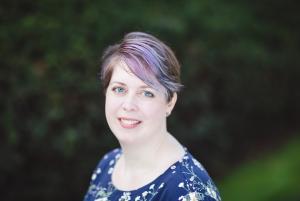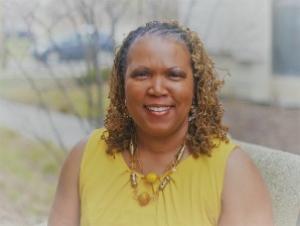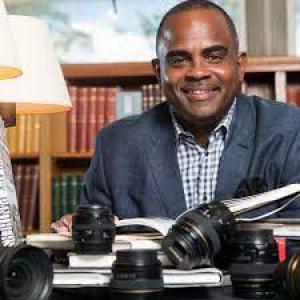Resources

…and they had the best class ever. I was honestly surprised I made it a whole month into the semester before getting sick, what with a preschooler at home. Much of the time, despite everything we should have learned from COVID, I strap on a mask and go teach anyway – but this time, my voice was gone and I felt like I’d been hit by a truck. I had to cancel classes. At least, I thought I did. My introductory course wasn’t going to happen, but what about my majors- and minors-only seminar? It was a new course, filled with mature students I had invited to study theology more deeply, and the whole point was that it was discussion-based. They could do that without me, couldn’t they? It was a wild morning – I decided to NOT cancel the seminar, but wanted to be sure I shaped the space and had some accountability for it, so I spent all the moments in my doctor’s waiting room typing out ideas on my phone. Before the class met, I had a structure ready. A colleague was going to go “start” the class for me by reading our weekly Alice Walker poem and handing out materials; students would have worksheets and assigned groups for a critical reading activity where they examined our text (a passage from Teresa of Avila) for aspects they thought were relatable and useful, or irrelevant and unhelpful. I also gave all twelve students a task for the day – everything from timekeeper to worksheet distributor, discussion leader to careful note-taker, and clock-watcher to pacing/energy manager. About half of them were told to send me materials as soon as class ended – pictures of their notes, or the sheets they filled out, even just emails to tell me how things went. After that, all I could do was sit at home in my robe with a hot cup of tea, and wait. The emails started trickling in about an hour after class was due to end. “Everything went really well!” one adult student gushed. “We stayed the whole time!” (I had explicitly told them it was okay if they decided to finish up early). When I saw notes and the filled-out worksheets, I was a bit startled at how detailed everything was. Despite not hearing the discussion, I could get the flavor of it – long story short, my students don’t like it when women writers in spirituality are self-deprecating, and they were annoyed that Teresa of Avila kept undercutting her own authority by calling herself a “mere woman” (fair enough, blossoming feminist theologians). By the time I was back on campus and started running into students from that class, it became clear that they’d had an unexpectedly delightful time. “We were so nervous!” it always started out, “But once we got going, everybody was really engaged!” By the time we met again a week later, I was confident in opening class by saying, “So what do you want to talk about?” while I sat back and ate crackers from a missed lunch. There was some hemming and hawing, but after a minute or two, they launched into the topic of the week. I almost felt unnecessary. Aside from tremendous pride in my students, the biggest lesson I took away from this unorthodox day of teaching was to get out of my own way. It doesn’t seem like a hard lesson, except that I’ve spent all my years at this institution pushing in exactly the opposite direction. The students who show up in my introductory courses are predominantly anxious – most have never studied religion before and are fearful of the difficulty of the course. One of the ways I help them feel more confident is by tightly controlling the space and making the boundaries and parameters clear – you will be in small groups for this many minutes, have one answer to share about that question, etc. When they know what I expect of them, they relax, and we have better interactions overall. It’s not quite the open forum that I loved in many of my favorite undergraduate courses – the ones that started with “well, what did you think of the readings?” and went from there – but it’s appropriate to the situation, and it works. I knew it might be a little tricky to switch out of that mode for my seminar class, but I had underestimated how intentional I would need to be to not take over the room. It turns out that not being in the room in the first place was the hard reset I needed. I was still present in the ways that I shaped the space and crafted the reflective forms of learning, but students didn’t need my voice to be so loud when they were still learning how to amplify their own. I’m still early enough in my teaching career that it’s helpful to have reminders that I’m not growing into just one type of professor; I’m growing into being several types of teacher that I can pull out when I’m in the appropriate context. This semester, I’m going to aim to enjoy both the courses that I carefully control, and the one where I should be more of a fly on the wall. And in the future, I might strategically abandon my students a little more often, just to see what they can do without me.
Miguel A. De La Torre is Professor of Social Ethics and Latinx Studies at Iliff School of Theology. In this Silhouette Podcast Interview, De La Torre discusses what it means to have come from poverty, discovery of Liberation Theology, gratitude for political failure, and creative expression in the scholarly life.

In 1850, Harriet Beecher Stowe began writing a story about slavery. Stowe’s father, Lyman Beecher, was a pastor of Presbyterian and Congregational congregations in New York and Connecticut before moving with his family to Cincinnati, Ohio, to serve as president of Lane Seminary, a Presbyterian institution, in 1832. As a young adult, Stowe attended a series of debates on abolition, colonization, and slavery at the seminary. These debates in 1834 stirred the fires of abolitionism among many of the students, which agitated the board of trustees, and Stowe’s father sought a compromise between the students seeking to be bolder and more strategic in their activism and the trustees urging the school to focus on theological subjects and training future clergy for pastoral leadership. Ultimately, fifty-one students decided to withdraw from the seminary. They published a statement protesting the institutional leadership of both the trustees and Beecher. The students detested institutional attempts to censor their activism on campus and accused the school’s leaders of cowardice and betraying the call of Jesus Christ: “Are our theological seminaries to be awed into silence upon the great questions of human duty? Are they to be bribed over to the interests of an unholy public sentiment, by promises of patronage or threats of its withdrawal?” Stowe’s literary career began to flourish around the same time as she began publishing many essays in various periodicals, but she returned to the topics discussed at Lane for her most famous and influential work, Uncle Tom’s Cabin, which was first published in serial form in an abolitionist newspaper in 1851, and then in book form the following year. I presently teach at a different Presbyterian seminary in Decatur, Georgia. Though hundreds of miles and almost two centuries separate Columbia Seminary in 2023 from Lane Seminary in 1834, I believe the searing questions from the students departing Lane are hauntingly relevant at Columbia and other seminaries. Many of the conversations among faculty and administrators at Columbia are about the future of theological education. We talk about the promises and perils of online education, the joys and challenges of teaching multi-vocational students, and the pros and cons of reducing credit hours in certain degree programs. These are rich and necessary dialogues, but I also know that we are not addressing all of the “great questions of human duty.” I can’t help but feel that the busyness of strategic planning, with its accompanying committee meetings, listening sessions, bar graphs, and pie charts, has awed us into silence on Columbia’s historic sins and reparative justice. On June 15, 2020, the board of trustees and president’s council of Columbia issued a statement that entailed a “commitment to repair the breach.” Columbia’s leadership confessed that the seminary “came into being in the context of and participated in the subjugation and oppression of Black people.” This is an important acknowledgement of Columbia’s sinful past. But confession also requires addressing the totality of wrongdoing that lies at the foundational roots of the seminary. In 1834, six years after its founding and three years after its first classes, Columbia received $3,603.25 in its endowment from the sale of eighteen enslaved African Americans. Charles C. Jones, a white member of Columbia’s board who joined the faculty one year later, inherited four enslaved persons, a young woman named Cora and her three children, from Andrew Maybank, a white plantation owner in Liberty County, Georgia. In his will, Maybank also instructed Jones to sell fourteen of his other enslaved persons, with the proceeds directed to Columbia Seminary. Jones sold Cora and her three children in a private sale for $1,000. He also arranged for the other fourteen enslaved persons to be sold in a public auction for $2,603.25. This is but one of numerous instances in which money derived from the sale of enslaved persons flowed into Columbia’s endowment. In 1845, a journal published by the Associate Reformed Synod of the West excoriated Columbia for benefiting from a public auction of enslaved persons. The journal found it tragic to see human beings—“the following negro slaves, to wit: Charles, Peggy, Antonett, Davy, September, Maria, Jenny, and Isaac”—listed as property akin to animals, lands, and other capital in a local Savannah newspaper. But it was especially infuriated to behold a Presbyterian seminary in the listing as the recipient of the funds derived from the sale. The journal criticized the lack of shame or remorse from the seminary as “scandalous.” Columbia’s commitment to racial repair includes new scholarships that cover the entire cost of tuition and fees for every admitted African American student. As I have shared in an earlier reflection, I am exceedingly grateful to teach at a seminary that has the financial resources to support the students in my classroom. But there is one glaring omission in Columbia’s efforts to repair the breach: The absence of reparations to Cora’s descendants and the descendants of other enslaved persons who were sold to enrich the seminary’s endowment. In 2019, Virginia Theological Seminary designated 1.7 million dollars as a reparations endowment fund to identify and pay the descendants of Black persons who labored on its campus during slavery, Reconstruction, and Jim Crow segregation. Three years later, the seminary reported that this fund increased to 2.2 million dollars and nearly 200 descendants had received payments. Virginia Seminary’s work toward reparative justice is simultaneously a model and an indictment of theological education. Surely it is not the only theological school that must atone for its historic sins of slavery and racial oppression. Both Columbia and Virginia are among the wealthiest theological institutions in the nation. In 2022, one magazine published a list with the ten schools holding the largest endowments: Princeton Seminary ($1.45 billion), Harvard Divinity School ($845 million), Yale Divinity School ($597 billion), Candler School of Theology ($352 million), Duke Divinity School ($291 million), Columbia Seminary ($284 million), Vanderbilt Divinity School ($277 million), Pittsburgh Seminary ($262 million), Perkins School of Theology ($248 million), and Virginia Seminary ($215 million). One question I sometimes encounter revolves around how institutions can make amends for injustices that happened so long ago. I often respond with an observation and a question. I recognize that many years have passed, and we have certainly witnessed some progress in the pursuit of racial justice. I then ask when a specific institution made things right and repaired relations with the families and descendants of the people it directly harmed. In the case of Columbia, the answer is not yet. There is much excitement about Columbia’s future with a desire to boldly step into the future of theological education with renewed purpose and new vision. But before revival there must be a reckoning.
A Silhouette Interview with Mai-Anh Tran, Vice President of Academic Affairs and Academic Dean with Garrett–Evangelical Theological Seminary.
Silhouette Interview Podcast with Tat siong Benny Liew, Class of 1956 Professor of New Testament Studies at College of the Holy Cross

There is a setting on Zoom which allows participants to blur their background. The individual is fully aware of the personal home, office, car, or other location. However, viewers on the Zoom line, if you will, have to guess or surmise the place behind the face. I know where I am. You are left to nebulously wonder. As professors we show up in the classroom, whether on campus or online, fully aware of how we are feeling. There are joys that call for jubilation and heartaches which weigh heavily. We know. We try to prevent our students from knowing. For the sake of pedagogical performance, we attempt to hide those morose monuments. In our teaching we make valiant strides to blur the burdens beckoning us back to bed. So that the language of hermeneutics, theology, religious studies, sociology, ethics, and pastoral care and counseling carry the day, we mute our emotions. There is a tendency to show up poised and put together when in reality we are a puddle of tears. We dare not permit a clear screen of pain and anguish. Thus, through an obscure framing we don a mask of dis-ease and discomfort. Since the onset of what is now the endemic presence of COVID-19, teaching has had to muddle through communal conundrum and global grief. I dare not aver that there was not such widespread distress before the pandemic: #BlackLivesMatter, #MeToo, the Civil Rights Movement, the Cold War, the Rwanda Crises, the HIV/AIDs epidemic, earthquakes in Haiti, and the Spanish Flu, to name a few, were all large scale crises that did not escape classroom discussions. These watershed moments continue to shape course content. Ours is an ancestry of crisis pedagogy with the purpose of trying to create progeny change agents. We cut our teeth on teaching while grieving. Recent events continue to prove fodder for our goals to mold social activists, social catalysts, justice leaders, pastors, counselors, and professors. Another mass shooting in the United States, a war in Ukraine, deadly earthquake decimation and demise in Turkey and Syria, and more deaths from COVID-19 appear antithetical to what we are trying to accomplish in the classroom. Ours is the task of nurturing persons who will love mercy, do justice, and walk humbly when it seems that yes, the world is going to hell in a handbasket. And yet, we continue to teach. #WePersist. A macrocosmic lens gives broad strokes. These we cannot blur, per se. However, the microcosmic, personal matters we want to keep at arm’s length. Ours is not the tendency to announce to our students news of a tenure and promotion denial or an article rejection. We swallow the agony of being an empty nester longing for our children as advisees demand the care we’ve reserved for our loved ones. Professors and administrators have struggled to be there for students when members of their own families died, lost jobs, and became ill due to COVID-19. This is the blurring. So what do we do? This was not meant to be a doom and gloom, woe-is-me writing exercise. I would like to encourage us, encourage me, to be more transparent. Imagine showing up in the classroom and honestly telling your students, “I am not okay today.” A statement of “I am struggling” from a professor could free classroom colleagues to relax, relate, and release. I am not saying everything needs to be shared, nor all the time. I also realize the potential maternal repercussions if I, a Black, cisgender, female professor, dare to be vulnerable. However, instead of blurring the background, how about allowing our emotional and tender forefronts to boldly manifest. In freeing ourselves, our classrooms can become a means to liberate our students. Our teaching task is to model the humanity of the profession. We do ourselves and our students a disservice when we obfuscate our dejection and obscure our despondency. I would posit that our mental health and wellness depend on our willingness to safely, openly unloose our stammering tongue. Teaching while grieving can make for fertile pedagogical ground. We grieve because we love. We grieve because we have lost what we love. May we honor the teaching, what we learn from grieving.
Silhouette Interview with Kenneth Ngwa of Drew University Theological School

On March 1st, the Wabash Center released a new volume of its Journal on Teaching centered on the theme of "Changing Scholarship." The issue features a multi-media essay called, "The Mother of Teaching, Ms. Earlene Watkins: A Real Mother for Ya," by Dr. Ralph Basui Watkins. The piece explores how Watkins' mother modeled for him a transformative, holistic approach to teaching. Accompanying the essay is a playlist on Spotify: Click Here to Listen. Below, Watkins walks us through his song choices and how he cultivated the soundtrack for his recent contribution to JoT.